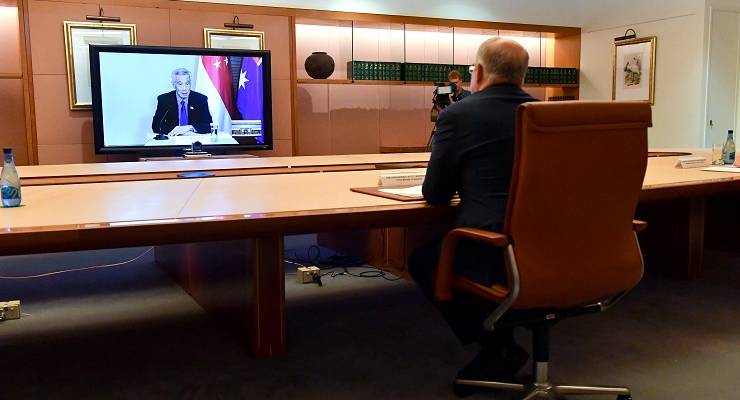
When Australia announced it was developing a contact tracing app like Singapore, the city-state was leading the world in its fight against COVID-19. Now it’s well and truly not.
The country has sunk deep into a second wave of cases, with the disease silently spreading through cramped dormitories occupied by foreign workers.
Many looked to Singapore’s use of technology as one of the ways it was beating the virus. But even the developer of the Singapore app himself has warned technology is not a panacea.
As Australians race to download our own tracing app, it’s worth asking — how much faith should we have in an app to help contain the virus, and what are the lessons from Singapore?
Only one part of Singapore’s strategy
While some observers raced to cast the TraceTogether app as central to Singapore’s early success story, in truth it was only one aspect. The country moved early to introduce a series of strict, sweeping protocols, including keeping people who tested positive inside hospitals, rather than trusting them to isolate at home. It also introduced a ban on large-scale gatherings early on and closed its borders to Chinese travellers in February.
Another component of its early strategy was that it had dedicated contact tracing teams ready to be mobilised.
Faults in the app
When Singapore rolled out TraceTogether in March, around 1 million, or one in six citizens, downloaded it. But by April 1 it was clear that that was not enough for it to be working effectively. National Development Minister Lawrence Wong said about three-quarters of the population, if not everyone, needed to download it.
There were also early signs that the app was not working as smoothly as it should. Users complained that they had to keep the app open for it to work, draining their battery. It also required users to keep bluetooth switched on. Critics also pointed to the fact that bluetooth technology led to a lot of false positives.
Technology not a cure-all
Even with strict quarantine measures in place and a world-first app, Singapore was unable to stop a new surge of cases among migrant workers living in crowded dormitories.
The developer of the app himself, Jason Bay, has warned technology cannot take the place of humans when it comes to tracing the virus.
“If you ask me whether any Bluetooth contact tracing system deployed or under development, anywhere in the world, is ready to replace manual contact tracing, I will say without qualification that the answer is, no,” he said in a blog post.
Where does this leave Australia?
Australia has put a lot of faith in the app to keep a lid on the virus while the economy opens up again. This might have been a convincing strategy while Singapore was the model of COVID-19 suppression. But that’s all changed now.
It’s clear that for the app to work in Australia it will need a massive uptake — far bigger than what Singapore saw.
Dr Arindam Basu, associate professor of epidemiology at the University of Canterbury in New Zealand, cautioned Australians against becoming complacent because of the app.
“You can’t put all your eggs in one basket and say, we’ve got a healthy workforce now, and we’re building an app,” he said.
“This is supplementary technology.”








The App needs someone also with the App to be close enough for Bluetooth to operate for a period of 15 minutes before it registers. If you were visiting the city from the country how many close contacts would you have for more than 15 minutes over a day? All it takes is one passing person to cough or sneeze at the right moment and you have an aerosol of Covid 19 in the air for a considerable time. To me it cancels out most of the benefit that it may have.
I have seen too much dishonesty from this bunch to trust any of them so I will probably give the download a miss.
The wealth building business model of coolie labour living in coolie labour conditions, is the major cause of the 2nd Singaporean wave ..
So yes of course, it won’t work because like Singapore have so many “cramped dormitories occupied by foreign workers.” And that is this article’s only clincher!
I wonder how much acquisition of this app & the storage by a no doubt grateful & generous Amazon cost?
Getting a discount on the tax they don’t pay?